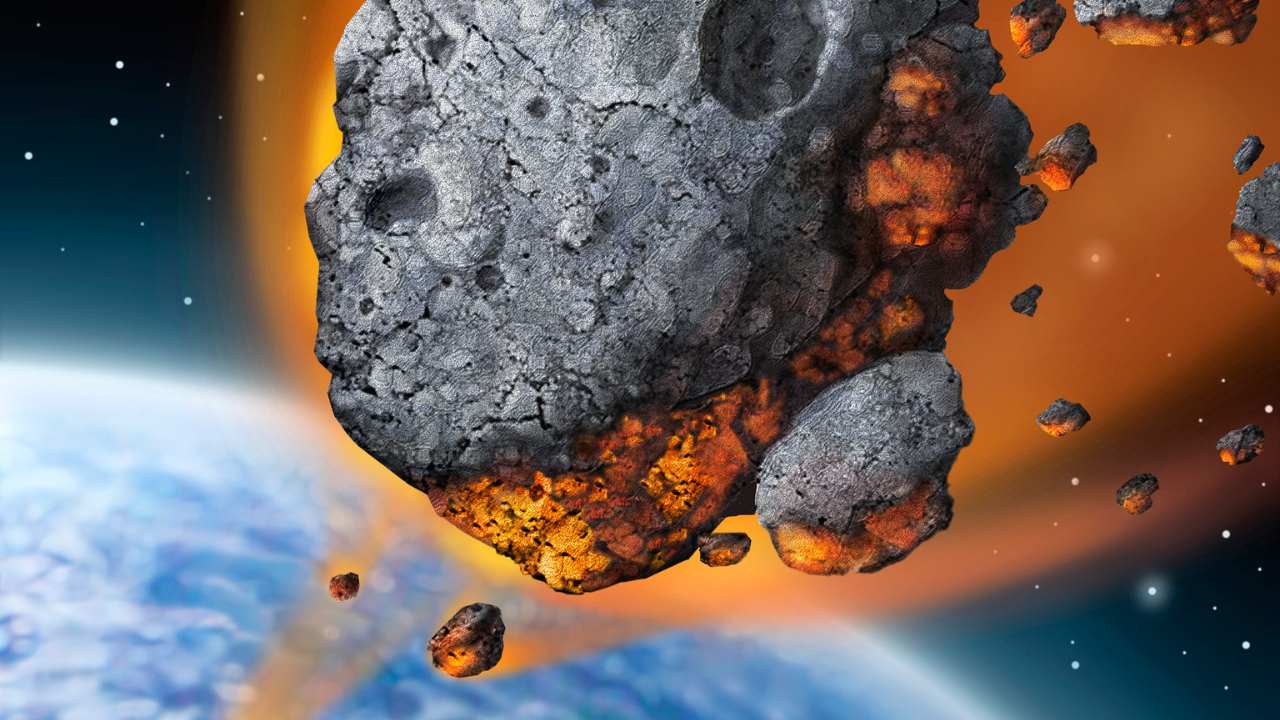

It’s when comets sweep in close to the sun that they produce their characteristic gas and dust tails. They’re composed of rock and ice, earning them the nickname dirty snowballs. Because they formed in the deep freeze of the outer solar system, comets are icier than asteroids. When that happens, a comet may plunge inward toward our sun. Comets tend to have much more elongated orbits than asteroids, sometimes reaching so far out into the outer reaches of our solar system that these small bodies can be perturbed by passing stars. In contrast to asteroids, most comets come from beyond the orbit of Pluto, in a region of the solar system called the Oort Cloud. Asteroids come in various shapes and sizes. In this illustration, the asteroid belt is the white donut-shaped cloud.

Get one while you can! Here is the inner part of our solar system, from the sun to the 5th planet, Jupiter. The first asteroids discovered were given names from ancient mythology, while newer names can honor anything from people (such as 3505 Byrd) to bands ( 8749 Beatles).ĮarthSky lunar calendars show the moon phase for every day in 2021. The International Astronomical Union has the responsibility for assigning asteroid names. Their compositions are reminiscent of the composition of Earth itself they’re made of metals and rocky materials.Īsteroids have lumpy shapes and are often compared to potatoes. So asteroids are little bodies that might have gone into making another planet, but didn’t. Early in the history of the solar system, the gravity of newly formed Jupiter brought an end to the formation of planetary bodies in this region and caused the small bodies to collide with one another, fragmenting them into the asteroids we observe today. The belt is estimated to contain between 1.1 and 1.9 million asteroids larger than 1 kilometer (0.6 mile) in diameter, and millions of smaller ones. The majority of known asteroids orbit within the asteroid belt between Mars and Jupiter, generally with not very elongated orbits. While both are small objects orbiting the sun – both created early in the history of the solar system, 4.5 billion years ago – there are enough differences that it’s easy to tell them apart.Īsteroids mostly reside in the asteroid belt, a wheel-shaped region of our solar system between the fourth planet, Mars, and the fifth planet, Jupiter.

How do asteroids and comets differ? Image via Jeremy Perez from Arizona.Īsteroids and comets can usually be distinguished by what they’re made of, and by where they’re found in space. For example, Manx comets have comet-like orbits, but they do not have tails and are composed of rocky material like asteroids.Comet C/2020 F3 (NEOWISE) was one of the good things about 2020. While many comets are quite different from asteroids, scientists are finding more objects in the solar system that have some traits of both. Although the belt contains millions of asteroids, its total mass is thought to be much less than that of Earth's Moon. Most are found in the asteroid belt between the orbits of Mars and Jupiter. Their sizes can vary – many are less than 10 metres wide, but the largest asteroid ever detected, Vesta, is 530 kilometres wide. This effect makes comets much easier to spot from Earth.Īsteroids, a type of minor planet, contain a lot of the same elements as the solar system's rocky planets, including carbon and metals. However, their elliptical orbits occasionally bring them close to the Sun, causing their ice and frozen gases to vaporize and form tails behind them. Comets are most often found in the outer solar system, far away from the Sun, where they remain frozen and difficult to observe. (Credit: ESA/Rosetta/NavCam) What is the difference between an asteroid and a comet?Īlthough comets and asteroids can be similar in size, they are made of very different materials and are found in distinct parts of the solar system.Ĭomets are like dirty cosmic snowballs they are made up of ice, frozen gases, rock and dust, and generally range from a few hundred metres in diameter to tens of kilometres wide. A view of Comet 67P/Churyumov–Gerasimenko taken in 2015 by the Rosetta spacecraft.


 0 kommentar(er)
0 kommentar(er)
